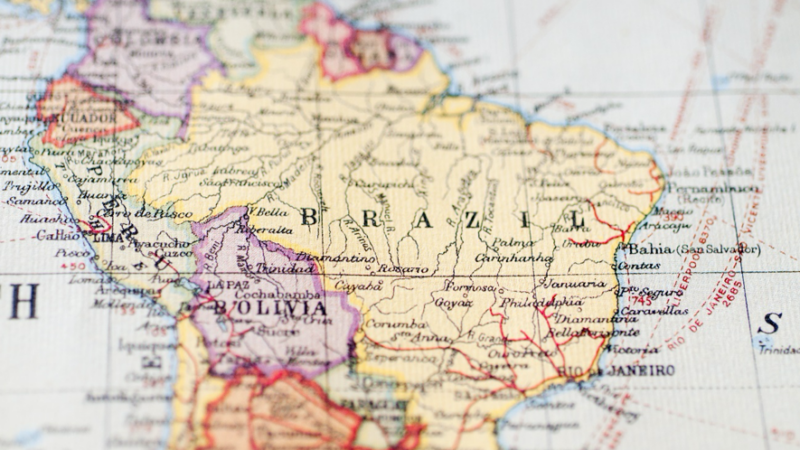Abstract: China has sought closer cooperation with LAC nations and is presently one of their main extra-regional partners. The country’s engagement with the area is primarily due to its economic needs, which take into account factors such as its export-based development model, rapid development, and its ever-growing urbanization process. Nonetheless, while Chinese investments and cooperation are welcomed by LAC states, its presence has resulted in security implications that affect regional, societal, and environmental security.
Bottom-Line-Up-Front: Latin American and Caribbean (LAC) states have and continue to welcome Chinese investments, diplomatic support, technical cooperation, and its demand for their commodities. However, China’s presence in the geographical region has highlighted severe and long lasting security implications.
Problem statement: How can China’s goals and affiliated security implications be better understood and mitigated in Latin America and the Caribbean?
So what?: LAC countries must collaborate alongside international organizations and demand that China abides by international and domestic laws regarding human rights, trade, finance, and the environment. In doing so, the efforts stated above should serve to avoid any negative impacts, whether direct or indirect that result from China’s economic activities in the region.

Source: shutterstock.com/Jen_JPayless
China’s goals in Latin America and the Caribbean
China has sought closer cooperation with LAC nations and currently a main extra-regional partner. The country’s engagement with the territory is based on economic needs due to its export-based development model, rapid development, and ever-growing urbanization process. Beijing has three main strategic goals in the vicinity, namely:
- To maintain access to commodities so as to fuel Chinese industrial production and capital formation. This not only includes building factories but also cities to support the ongoing process of urbanization.
- Secure access to foodstuffs to compensate for the lack of agricultural land and water required to feed its population of 1.35 billion.
- Preserve the LAC region as a market for its goods and services, particularly in strategically valued sectors including energy, construction, telecommunications, banking, and high technology.[1]
In total, trade between China and LAC skyrocketed from US$ 17 billion in 2002 to almost US$ 315 billion in 2019.
Statistics indicate an increasing Chinese footprint in the Latin American region’s commercial activities. In total, trade between China and LAC skyrocketed from US$ 17 billion in 2002 to almost US$ 315 billion in 2019. Additionally, in 2015 President Xi Jinping set a goal aimed at increasing total China-LAC trade to US$ 500 billion within the next 10 years.[2] In an economic lens, China has already invested an estimated US$ 180 billion in infrastructural development programs in the LAC region. Similarly, 25 out of the 31 LAC countries have joined the Belt and Road Initiative (BRI). The BRI is Beijing’s official discursive framework which intends to build a coherent narrative for a wide range of different projects and policies. Correspondingly, it is geared towards improving relations between China and other countries through the development of trade and investments.[3] Lastly, in the military sector, China’s arms sales to LAC amounted to US$ 676 million in the period between 2008 and 2018.[4]
The flip side of the coin
Once again, it cannot be stressed that while Chinese investments, diplomatic support, technical cooperation, and demand for commodities are welcomed by the LAC states, the nation’s presence poses security implications. First, it affects regional security due to arms trade flows to autocratic nations in the area which then deepen the security dilemma with democratic neighbors. For example, China exported US$ 592 million in arms to Venezuela between 2008 and 2018, bolstering President Nicolás Maduro’s repressive regime. Equally, the Venezuelan authoritarian practices have triggered animosity from its democratic peers, which led to the establishment of the Lima Group. As a multilateral body, it was created by 15 American nations in Lima in 2017 with the aim of fostering democracy in the country.[5] This ideological rift has notably weakened regional integration initiatives. Likewise, the possibility of interstate militarized disputes which have the potential to evolve into wars has heightened. In January 2021, the Venezuelan coast guard arrested 12 fishermen from Guyana in the Essequibo region, an area rich in oil and gold in dispute between the two states, raising the tensions between Caracas and Georgetown.[6]
Second, as China’s commercial activities extend autocracies’ longevity in the region, it hampers societal security. In other words, it contributes to the growth of felonies, criminal networks, and instability within Latin America. Since 2005 China has aided the survival of Maduro’s regime through oil imports and the provision of an accumulated US$ 62.2 billion in loans to Caracas. On the other hand, the Venezuelan government’s lack of prudent management practices has caused the economic and political demise that is currently unfolding in the nation. As a matter of fact, roughly 96 percent of the population lives in poverty[7]. Arguably, the situation has prompted the exodus of 4 million Venezuelans from their homes since 2015. The migrants flee to other South American countries such as Colombia, Brazil or Peru, where local public service systems which tend to be inefficient and precarious are further burdened. In addition, Venezuela has become a conduit for criminal flows including cocaine and weapons, together with being a haven for terrorist and criminal organizations like the Lebanese Hezbollah, the Revolutionary Armed Forces of Colombia (FARC), and the National Liberation Army (ELN) from Colombia.[8]
Since 2005 China has aided the survival of Maduro’s regime through oil imports and the provision of an accumulated US$ 62.2 billion in loans to Caracas.
Third, as Latin American countries have expanded in the areas of agriculture, livestock, and mining to meet China’s demand for commodities, environmental security has been compromised. Unfortunately, this has led to the destruction of essential ecosystems in the region which also threatens the livelihood of autochthonous peoples. The previously stated effects are particularly stark in the Brazilian Amazon, where the expanding agricultural sector has destroyed tens of thousands of square kilometers of forest due to an increase in livestock and soybean production. The same has been happening to the Gran Chaco forest in Argentina, South America’s second largest biome in size.[9] Indigenous movements in Ecuador and Peru have also accused Chinese oil and mining companies of irregular land acquisition practices along with being denied access to safe water resources.[10] As of 2019, indigenous protests in Ecuador pressured the Chinese consortium Andes Petroleum into ceasing its operations in the Yasuní national park.[11]
The need for regional collaboration
China is expected to become LAC’s dominant trading partner by 2050, with the assumption that its firms will be the leading foreign owners, investors, and lenders by then. In accordance, Chinese military goods will become ubiquitous among LAC armed forces, surpassing American, Russian and European competitors[12]. Faced with such a situation, LAC countries will have to collaborate with international organizations to find common solutions to transnational issues. Emphasis should be directed to demanding that China adheres to international and domestic laws regarding human rights, trade, finance, and the environment such that other countries are not negatively impacted by its economic endeavors.
In accordance, Chinese military goods will become ubiquitous among LAC armed forces, surpassing American, Russian and European competitors.
Henoch Gabriel Mandelbaum is a current Master’s student enrolled into the Political Science program at the University of São Paulo, Brazil. He previously attained a Bachelor of Arts in International Relations from the Pontifical Catholic University of São Paulo. Additionally, he holds research positions at both the University of São Paulo’s International Relations Research Center and the São Paulo State University’s Nucleus of International Studies & Analyses department. Particularly interested in Brazil, China, Latin America and the Indo-Pacific region, he actively researches the fields of international security, foreign policy analysis and diaspora studies. The author is also a member of the Midwest Political Science Association, the Brazilian Political Science Association, as well as the Brazilian Association for Defense Studies.
[1] Robert Evan Ellis. “The Strategic Context of China’s Advance in Latin America: An Update,” Observatoire de la Chine, no. 17 (April 2017): 2-7.
[2] Mark P. Sullivan, and Thomas Lum. “China’s Engagement with Latin America and the Caribbean,” Congressional Research Service Report, no. 10982 (November 2020): 1-3.
[3] Juan Enrique Serrano Moreno, Diego Telias, and Francisco Urdinez. “Deconstructing the Belt and Road Initiative in Latin America,” Asian Education and Development Studies (May 2020): 1-11.
[4] Katherine Koleski, and Alec Blivas. “China’s Engagement with Latin America and the Caribbean,” U.S.-China Economic and Security Review Commission (October 2018): 3-65.
[5] “Statement from the Lima Group,” accessed March 2, 2021, https://www.international.gc.ca/world-monde/international_relations-relations_internationales/latin_america-amerique_latine/2020-10-14–lima_group-groupe_lima.aspx?lang=eng.
[6] “Venezuela says it has released detained Guyanese fishermen,” Reuters, February 3, 2021. https://www.reuters.com/article/venezuela-guyana-idUSL1N2K9222.
[7] “Venezuela poverty rate surges amid economic collapse, inflation – study,” Reuters, July 7, 2020. https://www.reuters.com/article/venezuela-poverty-idUSL1N2EE1MG
[8] Robert Evan Ellis. “The Impact of China on the Latin American Security Environment,” Revista da Escola de Guerra Naval 24, no. 2 (May 2018): 456-462.
[9] Agostina Blengino, and Jordy Pasa. “The Bitter Aftertaste of China’s Hunger for South American Food,” The Diplomat, November 12, 2020, https://thediplomat.com/2020/11/the-bitter-aftertaste-of-chinas-hunger-for-south-american-food/.
[10] Sophie Wintgens, and Thierry Kellner. “China, Latin America and human rights: A worrying equation?”, in Shifting Power and Human Rights Diplomacy: China, ed. David Ismangil, Karen van der Schaaf, and Stijn Deklerck (Amsterdam: Amnesty International Netherlands, 2020), 71-83.
[11] Gideon Long, “Ecuador’s indigenous people under threat from oil drilling,” Financial Times, December 5, 2019. https://www.ft.com/content/8e1acf14-e467-11e9-b8e0-026e07cbe5b4.
[12] Robert Evan Ellis, The Future of Latin America and the Caribbean in the Context of the Rise of China (Washington, D.C.: Center for Strategic and International Studies, 2018). https://csis-website-prod.s3.amazonaws.com/s3fspublic/publication/181119_FutureofLatinAmerica.pdf?fMECdCfwt7zdU7MyR9OFme08CFXWHti_.






